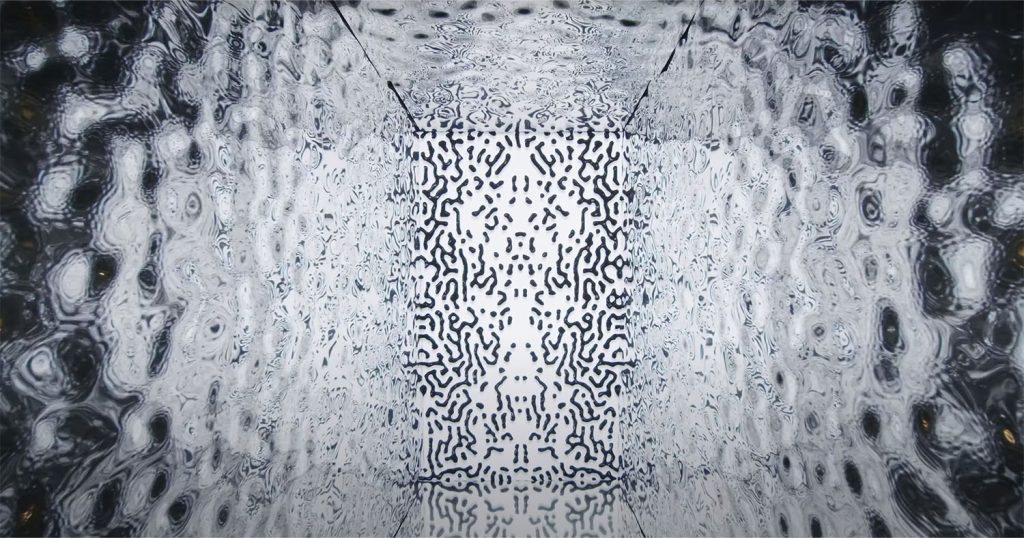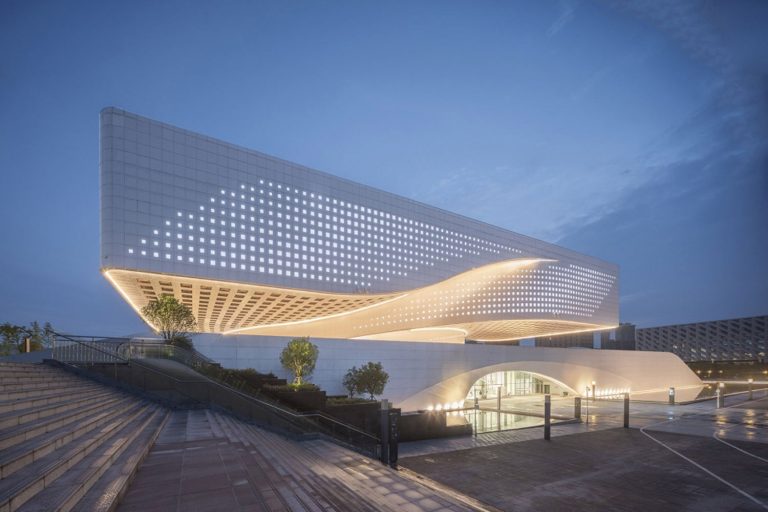
An installation named “Proteus 3.5, Contemplating in The Cloud” was created by Maria Smigielska and Compmonks. It is a mixed-media installation that is permanently exhibited at the Copernicus Science Center in Warsaw.
The installation is interactive and generative, allowing visitors to interact with a large-scale digitized ferromaterial image using their brain activities. Through a Brain-Computer Interface device, the neural activity of the visitors is measured and the resolution of ferromaterial is adapted accordingly, enabling a more intense human-material interaction. The image reflections and refractions within an immersive, room-scale chamber enhance the visual experience, blending the visitor with the light and their visual reflections.

Proteus is 2.5 x 2.5 x 1.5 m in size and is designed to resemble small and primitive chapels. It is intended for contemplation and spiritual introspection, detached from the physical world. The exterior of Proteus is presented as a black sectional simplicity, while the shimmering immersive interior presents a striking contrast. Upon entering the chamber, visitors are immersed in an animated and organic image that surrounds them.
The omnipresent effect is achieved through a frontally positioned human-scale digital screen and its reflections on the surrounding mirror-like metal surfaces. The cladded panels are smoothly deformed to mimic water ripples, further enhancing the immersive effect. The project is inspired by the complex behavior of ferrofluid material, which is constantly changing from dots to meandering stripes and coagulated regions due to the invisible force of magnetic fields. Like the Greek god Proteus, ferrofluid is capable of assuming many forms and becomes the unifying material aspect of a series of interactive and generative artworks.

The behavior of the material is difficult to control or simulate by nature, and as such, is taken as a value of diversity and exploration in the process of ephemeral and non-repeatable pattern generation. Displaying the material at such a large scale was made possible by digitizing the material with its surrogate of reaction diffusion algorithm.
Proteus 3.5 is part of a series of mixed-media interactive installations that began in 2018 and modulates matter with both human and machine intelligence. The project has been a part of artistic research at the Creative Robotics, University of Arts and Design in Linz, an artistic residency “Intelligent Museum” at ZKM Karlsruhe in 2021, residency at Kontejner in Zagreb (EMAP/EMARE) Croatia in 2023, and individual developments in between.

Project Info
Architects, researchers: Maria Smigielska, CompMonks
CNK team: Niko Krawczyk Zielinski, Barbara Malinowska Pohoryles, Michal Grzymala
BCI sponsorship: Muse
Videography: Thierry Serbeto, Alpha Leonis Productions
Metal cladding: Emboss
Location: Copernicus Science Center, Warsaw, Poland
Built area: 4 sq m















































